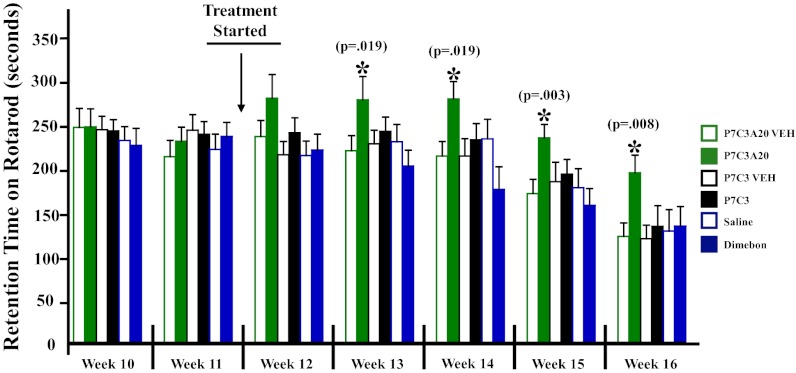Fig. 2.
P7C3A20 preserves performance in the accelerating rotarod test when administered at the time of disease onset to G93A-SOD1 mutant mice. Treatment of G93A-SOD1 mutant mice with 20 mg⋅kg−1⋅d−1 of P7C3A20, P7C3, or Dimebon, or the appropriate vehicle, was initiated on day 80, with 20 mice per group. All compounds were administered at 20 mg⋅kg−1⋅d−1 i.p. in divided doses. Each compound-treated mouse had a sex-matched sibling that received vehicle. Only sibling pairs were analyzed at each time point. By week 16, there were 13 compound–vehicle pairs remaining in each group. All vehicle-treated mice showed the expected decline in retention time on the accelerating rotarod over time, and P7C3 and Dimebon groups showed no difference in retention time compared with their vehicle groups. Mice treated with P7C3A20 showed significantly higher retention time on the rotarod at weeks 13, 14, 15, and 16. All testing and analysis were performed blind to treatment group.

